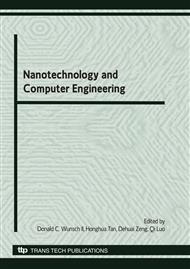p.23
p.27
p.33
p.38
p.43
p.48
p.52
p.58
p.64
Forecasting Groundwater Level Based on Relevance Vector Machine
Abstract:
Relevance Vector Machine (RVM) is a novel kernel method based on sparse Bayesian, which has many advantages such as its kernel functions without the restriction of Mercer’s conditions, and the relevance vectors are automatically determined and have fewer parameters. In this paper, the RVM model is applied to forecasting groundwater level. The experimental results show the final RVM model achieved is sparser, the prediction precision is higher and the prediction values are in better agreement with the real values. It can be concluded that this technique can be seen as a very promising option to solve nonlinear problems such as forecasting groundwater level.
Info:
Periodical:
Pages:
43-47
Citation:
Online since:
June 2010
Authors:
Price:
Сopyright:
© 2010 Trans Tech Publications Ltd. All Rights Reserved
Share:
Citation:


